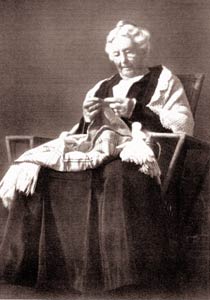Morgan Hill – Among the women pioneers who led Morgan Hill community’s founding 100 years ago, none experienced greater heart-break – and triumph – in life than Catherine O’Toole Murphy Dunne.
Her story is a classic immigrant’s rags-to-riches tale full of romance and adventure.
She was born Catherine O’Toole in Wexford County, Ireland, in 1831. Her family, like many Irish of that era, immigrated to Quebec, Canada, when she was a young girl. There, she received a Catholic school education.
In 1850, Quebec citizen Patrick Fitzgerald died, an event that would lead to a major change in the 19-year-old Catherine’s life. Fitzgerald’s widow was Johanna Murphy Fitzgerald, one of the daughters of South Valley pioneer Martin Murphy, Sr., who had come to California as part of the first wagon team to traverse the Sierra mountains.
Concerned about his widowed daughter and her six youngsters, Martin Murphy asked his son Bernard to sail from San Francisco to the east coast of Canada to bring Johanna and her children to the South Valley. The quiet Bernard also had another motive in making the arduous trip. He wanted to reacquaint himself with – and marry – a certain young woman he’d fallen in love with when he resided in Quebec.
“He had little oppor-tunity to meet any of the few available women in California at that time,” wrote Marjorie Pierce in her book “The Martin Murphy Family Saga.”
“He arrived at his destination only to learn that his girl had given up on his returning and married another. All was not lost, however, for he met and married a comely, bright Irish lass from County Wexford named Catherine O’Toole,” Pierce wrote.
Soon after the wedding, Catherine voyaged with Bernard to California via the tropical jungle trails of the Isthmus of Panama. The couple settled on his 4,000-acre Rancho La Polka near what is now Gilroy. They lived in a tin house that had been shipped around the Cape Horn from the East Coast. Here, Catherine gave birth to a son they named Martin J.C. Murphy after Bernard’s father.
Tragedy, however, struck the happy family on April 11, 1853. On that date, Bernard took a business trip to San Francisco on the steamboat Jenny Lind. “She had left Alviso with 150 passengers, among them many prominent citizens of San Jose,” wrote Eugene Sawyer in his “History of Santa Clara County.”
“When about opposite of what is now Redwood City… the boiler exploded, killing many and wounding others,” Sawyer wrote.
Bernard was among the dead that day.
The widowed Catherine inherited Bernard’s vast ranch estates. For about 10 years, she prudently man-aged the various tracts of land by herself while raising her young son. Then one day on a business trip to San Francisco, she met a handsome man named James Dunne.
Dunne was a prominent Irish mercantile businessman who had journeyed to California from New Orleans. He had invested his money prudently in various large rural prop-erties in the South Valley area. This included the San Felipe Ranch in what’s now San Benito County. He also owned a large ranch in the King City area of the Salinas Valley.
Catherine married James Dunne on May 6, 1862. Together, they had three children whom they named Mary, Peter and Kate.
Twelve years later, when James died, Catherine found herself once again managing an immense estate – a combination of ranch land property that once belonged to her two deceased husbands. As well as other extensive holdings elsewhere, she controlled more than 18,000 acres of valley land dotted by oaks and crisscrossed by creeks that later become Morgan Hill.
Over the late decades of the 19th century, more people moved into the South Valley region to farm its fertile soil. A railroad line connected the burgeoning community to San Jose and San Francisco, bringing in more residents.
In 1895, Catherine’s son Pete began managing the family property and ranch business. Four years later, he hired the San Jose real estate firm of Burbank & Devendorf to sell subdivided lots of land in the shadow of El Toro. Fancy promotional literature in black-and-white photos displayed the Eden-like serenity of the “Catherine Dunne Ranch.” According to advertisements of that time kept by the Morgan Hill Historical Society, real estate lots sold for between $25 and $125 per acre depending on prime location.
The small Morgan Hill farming village sprang up along the railroad tracks to supply the increasing population with goods and services. With an eye to the religious life of the town, Catherine donated property to establish a Catholic Church. It was called St. Catherine’s after her patron saint.
A dirt farm road was built from the downtown area east into the mountains to end the Henry Coe Ranch. This avenue was named after Catherine – Dunne Avenue. Today, it’s a busy thoroughfare edged by a gauntlet of neighborhoods and shopping centers.
On March 10, 1925, Catherine died at the age of 96 in the Santa Barbara home of one of her daughters. But her generous legacy still lives on in the community of Morgan Hill as it prepares for its centennial year’s celebration.








